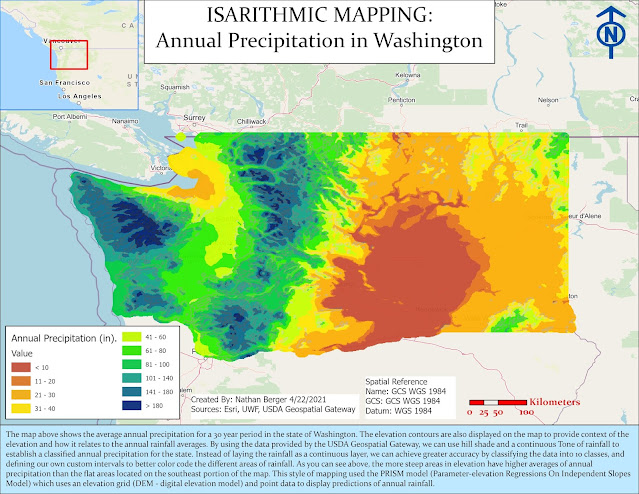Spatial Analysis: Possible Campsites at De Soto National Forest
The map depicted above displays possible campsites based on multiple parameters in the De Soto National Forest near Hattiesburg, Mississippi. The map identifies campsites with a specific distance away from roads, rivers, lakes and wildlife conservation areas.
As a GIS analyst, I utilized spatial analysis of vector data to build the map above. First, I used the buffer spatial analysis tool to buffer the roads (300 M) and water features (150 M for lakes and 500 M for rivers) within the area. I utilized a fixed buffer range and multi-buffer ranges based on multiple distance parameters to generate buffer rings. I then dissolved the features that overlapped to have a clear view of the data and then joined the two buffer feature classes together with a Union tool. I assigned the "insd_wbuf = 1 / insd_rbuf =1" variable to identify which polygons fell within the buffer ranges. I used the
overlay layer tool and selected the buffer union that I had created between the roads and water features as my input, with the
erase feature to exclude the conservation areas of wildlife in the area. This resulted in the possible sites for campsites in the future.
By using spatial analysis with vector data, in this case rivers, lakes, roads etc..., we identified possible campsites to build in the future at De Soto National Forest. This includes plenty of distance from roads, water features such as lakes, and wildlife conservation. I chose an equal interval of 3 colors, going from light yellow to bright red to indicate the campsite areas with the most area based on hectares unit of measurement. The percentages were then calculated by the area percentage to the total area of all of the possible sites. This lets policy makers understand the areas for possible campsites based on their total area available.




Comments
Post a Comment